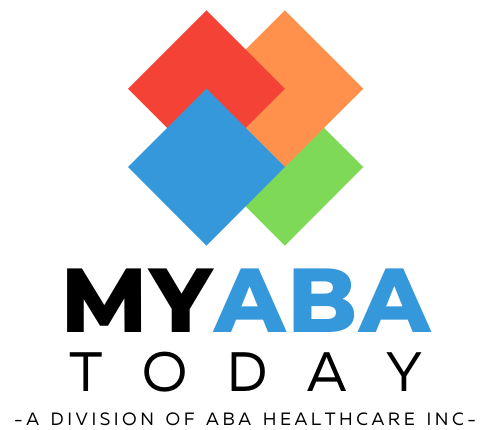Autism in Education Partnership
If you are a teacher, parent, caregiver, or anyone who has regular interaction with children, you’ve probably found yourself dealing with some type of challenging behavior at one time or another. Regardless of a child’s age, developmental level, strengths, or needs, challenging behavior will inevitably appear from time to time. However, if you work with learners with Autism Spectrum Disorder (ASD), you may have felt like you’ve faced more than your fair share of challenging behavior, and the research suggests that you are probably right. The exciting news is that it may be possible to prevent the development of many of these behaviors even before they start, and not just for learners with ASD.
Although challenging behaviors such as aggression, self-injury, and property destruction are not limited to children and adolescents with ASD, research tells us that individuals with ASD are at a higher risk than their typically developing peers or those with other diverse needs for developing challenging behavior at some time in their lives (McClintock, Hall, & Oliver, 2003; Minshawi et al., 2014). A survey of parents of nearly fourteen-hundred children with ASD showed that 68% of the children had demonstrated aggression toward a caregiver and 49% had engaged in aggression toward non-caregivers (Kanne & Mazurek, 2011). By contrast, challenging behaviors such as aggression, self-injury, and property destruction were seen in only 10% to 15% of individuals with other diverse needs (Emerson et al., 2001).
When we think about the risks of challenging behavior, we may tend to think about the potential for physical harm. Self-injury, for example, can result in significant health risks for the individual, and physical aggression and tantrum behavior can cause physical injury to the learner himself or to adults or peers who may be present. However, beyond the risks of physical harm and injury associated with challenging behaviors, individuals who engage in such behaviors may experience many other negative consequences. Children who engage in aggression or anti-social behavior tend to be less involved in classroom activities, which may significantly limit their opportunities to learn important new skills. They also tend to receive less instruction and positive feedback from their teachers and to perform more poorly on academic tasks than their classmates (NICHD, 2002). In addition, given the safety risk the behaviors pose, these children and adolescents are more likely to be subject to restrictive practices, such as physical interventions, restraint, or seclusion (Minshawi et al., 2014).
The desire to understand what causes challenging behaviors to develop and to be maintained has led to hundreds of research studies into the functions of behavior over more than thirty years. Beginning with some of the earliest research studies in this area conducted by Dr. Brian Iwata and his colleagues (1982/1994), results have consistently shown that challenging behaviors function to get something that the individual wants (attention; access to a preferred item, activity, or situation; a pleasant sensation, etc.) or to escape or avoid something that the individual doesn’t want (aversive tasks, activities, items, situations; non-preferred people; unpleasant sensations; etc.).
A child may bang his head on a table or wall because that behavior very quickly and reliably results in attention from adults who may be nearby. When a task or instruction is presented, a student may hit, kick, or pinch because she has learned that engaging in those behaviors results in the task being taken away. In these examples, it may not be that the learners are specifically thinking, “If I do this behavior, I will get what I want,” but over time they have experienced these consequences frequently enough that the challenging behaviors have become a quick and efficient way to get their needs met. This is particularly true when learners do not have other functional ways to express what they need or want, or if other ways they have used to communicate in the past have not resulted in the same consequence as quickly or as reliably as the challenging behavior.
Years of scientific study have proven that the functional assessment process can help explain why an individual is engaging in a problem behavior and can help identify a more socially acceptable way for the individual to get his or her needs met. However, since the purpose of a functional assessment of behavior is to figure out why a specific challenging behavior is happening, these assessments typically happen only after the behavior has become a problem. What if we were to take what we know from the body of research into functional assessment of behavior and use that information proactively to try to prevent problem behavior even before it starts?
Researchers and practitioners have identified a number of skills that play a role in reducing challenging behaviours and increasing desirable behaviours in learners with ASD. For example, we know that teaching learners to communicate messages that match the function of their problem behaviours in more appropriate ways can significantly reduce even the most severe problem behaviours (Carr & Durand, 1985). Teaching positive social initiations including joint attention, play organizers, sharing, displaying affection, and assisting peers can help learners with ASD more successfully navigate complex social situations (Kasari et al. 2005; Hanley et al. 2007). Teaching children specific skills to tolerate a delay in getting what they want (Fisher et al., 2016) and to communicate appropriately when they do not want something can effectively reduce challenging behaviour (Mace et al., 2011). Strategically and systematically targeting these skills, and providing lots of opportunities for repeated practice, before problem behaviour emerges may prevent problems down the road.
Some recent and valuable research into preventing the development of problem behavior has also been done by Dr. Gregory Hanley and his colleagues at Western New England University. Dr. Hanley and his team undertook an extensive review of the research into functional assessment and treatment of challenging behavior. They also reviewed the research into the skills that teachers consider to be most important for school success. By combining these two key areas, Dr. Hanley and his team have developed a curriculum of skills comprised of a combination of: a) the skills that are most often taught “after the fact” as replacements for problem behaviors after functional assessments have been conducted; and b) the skills that teachers consider to be most important for student success. The resulting “Preschool Life Skills” curriculum (Hanley et al., 2007) provides a proactive approach designed to teach learners critical skills to prevent problem behavior before it develops.
Skills such as responding appropriately to one’s name, following instructions from adults, and tolerating delays do not develop simply as a result of children spending time in preschool or elementary classrooms, experiencing center-based activities, or just growing and developing (Luczynski & Hanley, 2013). Instead, children must be presented with situations that might typically result in challenging behaviors, and in those moments, they need to be taught the appropriate skills that would serve the same function as the problem behavior. Children who are not presented with these valuable learning opportunities, and therefore do not have lots of opportunities to practice important skills, are more likely to develop problem behavior (Luczynski & Hanley, 2013) than their peers who are exposed to these experiences. The key is to begin this targeted teaching before the learner develops severe problem behavior.
Problem behaviors can be extremely disruptive, whether at home, at school, or in the community. In order to avoid or at least minimize the negative consequences that accompany instances of problem behavior, many parents and educators tend to carefully arrange the environment in ways that reduce the likelihood of these behaviors (Hanley et al., 2007; Luczynski & Hanley, 2013). For example, teachers may provide students working on an activity in groups with several sets of materials (markers, paints, scissors, etc.) so everyone in the group has access without the need for negotiation, compromise, or patience. Adults may quickly jump in to help children who start to get frustrated when they don’t understand how to solve a problem, when they can’t open a container, or when a preferred item is out of reach or unavailable. Instead of relying on these types of preventive strategies, it may be more effective to balance the benefits of preventive strategies with “thoughtful, gradual, and repeated introduction of conditions that may evoke problem behavior in order to teach more socially desirable responses” (Hanley et al., 2007).
Given what we know about the functions of challenging behavior and the skills that can help to reduce or even stop these behaviors, it seems only logical to ensure that children learn these critical skills before problem behavior develops, rather than after problems emerge. Incorporating some proactive strategies designed to prevent challenging behavior from occurring may be valuable in the short-term; however, relying solely on preventive strategies may actually reduce learning opportunities in the longer-term. It may be much more valuable to think about balancing the implementation of proactive strategies with the deliberate creation of opportunities to teach essential skills. Often by the time behaviors become challenging enough that they require intervention, the optimal time to teach essential skills has passed. As we begin to understand more about the development of problem behavior, it becomes clear that we need to place even more emphasis on preventing the development of behavior problems proactively through strategic, direct, and repeated teaching of essential skills.
To read the complete AIE information paper, “Teaching Essential Skills to Prevent the Development of Challenging Behavior in Learners with ASD” in English or in French, please visit the Autism in Education Partnership’s website at: http://aie.apsea.ca
References:
Carr, E. G., & Durand, V. M. (1985). Reducing behavior problems through functional communication training. Journal of Applied Behavior Analysis, 18(2), 111-126.
Emerson, E., Kiernan, C., Alborz, A., Reeves, D., Mason, H., Swarbrick, R., Mason, L., & Hatton, C. (2001). The prevalence of challenging behaviors: A total population study. Research in Developmental Disabilities, 2, 77-93.
Fisher, W. W., Thompson, R. H., Hagopian, L. P., Bowman, L. G., & Krug, A. (2000). Facilitating tolerance of delayed reinforcement during functional communication training. Behavior Modification, 24(1), 3-29.
Kasari, C., Freeman, S., Paparella, T., Wong, C., Kwon, S., & Gulsrud, A. (2005). Early intervention on core deficits in autism. Clinical Neuropsychiatry, 2(6), 380-388.
Hanley, G. P., Heal, N. A., Tiger, J. H., & Ingvarsson, E. T. (2007). Evaluation of a classwide teaching program for developing preschool life skills. Journal of Applied Behavior Analysis, 40(2), 277-300.
Iwata, B. A., Dorsey, M. F., Slifer, K. J., Bauman, K. E., & Richman, G. S. (1982/1994). Toward a functional analysis of self-injury. Journal of Applied Behavior Analysis, 27(2), 197-209.
Kanne, S. M., & Mazurek, M. O. (2011). Aggression in children and adolescents with ASD: Prevalence and risk factors. Journal of Autism and Developmental Disorders, 41(7), 926-937.
Luczynski, K. C., & Hanley, G. P. (2013). Prevention of problem behavior by teaching functional communication and self-control skills to preschoolers. Journal of Applied Behavior Analysis, 46(2), 355-368.
Mace, F. C., Pratt, J. L., Pranger, K. L., & Pritchard, D. (2011). An evaluation of three methods of saying “no” to avoid an escalating response class hierarchy. Journal of Applied Behavior Analysis, 44, 83-94.
McClintock, K., Hall, S., & Oliver, C. (2003). Risk markers associated with challenging behaviors in people with developmental disabilities: A meta-analytic study. Journal of Intellectual Disability Research, 47, 405-416.
Minshawi, N. F., Hurwitz, S., Fodstad, J. C., Biebl, S., Morriss, D. H., & McDougle, C. J. (2014). The association between self-injurious behaviors and autism spectrum disorders. Psychology Research and Behavior Management, 4(7), 125-136.
NICHD Early Child Care Research Network (2002). Early child care and children’s development prior to school entry: Results from the NICHD study of early child care. American Educational Research Journal, 39, 133-164.
Autism in Education (AIE) Partnership
The Autism in Education (AIE) Partnership is an inter-provincial partnership among the Departments of Education and Early Childhood Development of Canada’s four Atlantic Provinces (New Brunswick, Newfoundland and Labrador, Nova Scotia, and Prince Edward Island) with the aim of enhancing access to best educational practices in the area of autism across Atlantic Canada. The mission of this inter-provincial partnership is the advancement and dissemination of knowledge of autism spectrum disorder in the area of educational instruction and practices.
Shelley McLean, M.Ed., BCBA, serves as the Coordinator of the AIE Partnership. You may contact her at shelley_mclean@apsea.ca









